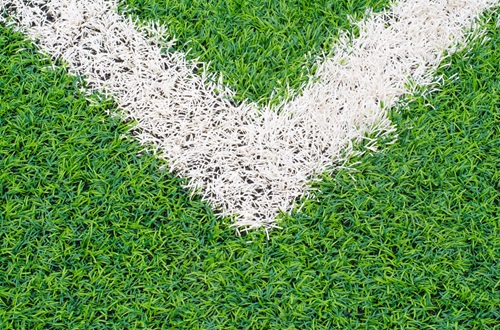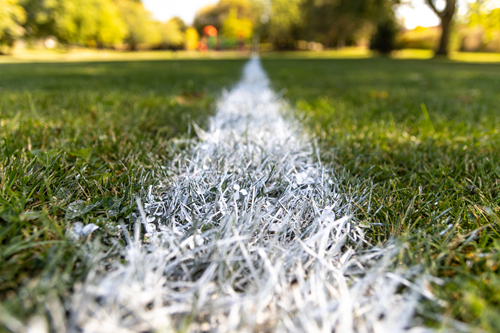
Photo © Mark Adams | Dreamstime.com
In April, the EPA made headlines when it announced that studies had found no significant difference in the exposure to certain chemicals between athletes who played on synthetic turf fields that use crumb rubber infill vs. those who played on grass fields. Now, a new study says that synthetic fields actually have a lower incidence of concussion.
That study, conducted by researchers at UT Southwestern Medical Center and published in the Clinical Journal of Sport Medicine, studied football players between the ages of 10 and 24 years old who had had a concussion.
Of those, players on natural grass experienced more severe concussions and a higher number of symptoms than those who played on synthetic turf.
According to US News and World Report, “Players on natural grass fields also had an average concussion symptom severity score of more than 26, compared with under 12 for those injured on artificial turf.”
“Many natural grass fields, especially at the youth level, may not be well maintained and can be harder and less forgiving than modern artificial turf, which has evolved significantly from the old, hard fields of the past,” said lead researcher C. Munro Cullum, a professor of psychiatry, neurological surgery and neurology at UT Southwestern Medical Center in Dallas.

The study concerning synthetic turf and concussions also noted that all of the players sustained a helmet-to-ground concussion during practice or play, and then went to a specialty concussion clinic within 14 days of their injury.
An article in Greater Milwaukee Today noted, “In the United States, between 1.7 million and 3 million sport- or recreation-related concussions occur every year, with around 300,000 from football. In 2022, 2.3 million children below the age of 17 were diagnosed with a concussion or a brain injury, a diagnosis most prevalent among older boys, according to a survey by the Centers for Disease Control and Prevention.”
The findings, which have been widely reported in major news outlets, have been a boon to those with synthetic turf fields, who have contended with misinformation on the safety of their surfaces. (It’s also a blow to those who have been trumpeting natural grass as the one and only safe surface.) But the question of which is the “best surface” likely will not be answered any time soon.
As sports tourism continues to grow, and as more sports complexes are built (both on the private level, such as in sports parks, and on the municipal level, such as in fields found in parks and public high schools) and as communities become increasingly land-locked, fields will be expected to host a higher number of sports events, with less downtime in between those events.
The rise of sports like flag football at both the high school and college level is expected to generate an even greater demand on existing fields and may lead to the construction of new facilities or (in many cases), the need to keep existing fields in good repair so as to be able to host multiple sports. Expect studies like the one mentioned above – as well as plenty of others that are sure to question those findings – to be cited in the decision making process.
Maintenance required to keep both grass and synthetic sports surfaces in optimal playing condition is an evolving science; practices and developments are followed closely by organizations like the SportsField Management Association (SFMA) and the Golf Course Superintendents Association of America (GCSAA).
Over time, maintenance professionals for grass fields (and in the cases of synthetic fields, manufacturers and installers of fields) have been able to adjust surfaces to provide the best possible playing conditions for specific sports; however, in the case of fields that host multiple sports throughout the year, finding a middle ground can be difficult.
To be clear, each surface has advantages. Grass fields may be marked for new uses without difficulty or risk (something lacking in synthetic fields unless specific products are used), and with proper care, can provide a dependable playing surface.

Among the advantages of synthetic turf systems are their ability to host multiple sports without recovery time, their lack of need for mowing, weeding and fertilization and their ability to drain quickly and be ready for play right after a rain. Additionally, they are able to be manufactured in a variety of colors to fit various installations. (Boise State University, for example, has the distinctive blue field which has earned the moniker of “Smurf Turf.”)
The question of which surface is better remains open-ended; much depends on the specific needs of the venue owner, as well as budget, maintenance capabilities, weather conditions and soil conditions. Count on the debate to continue.

